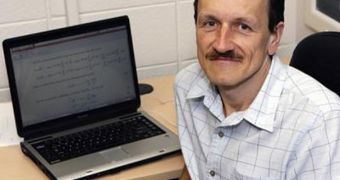For chemists, helium is one of the most reliable and interesting chemicals. The gas has the lowest boiling point of all elements, and is also widely considered to be the most stable. For most people, it's a party accessory, used to inflate balloons and make people's voices sound funny. For scientists, it represents a key element for cooling systems on space-based telescopes and nuclear reactors, as well as in lasers for eye surgery. Now, an international collaboration of investigators believes it may have found a new use for the element. The researchers say that the gas could lay the foundation for new, high-accuracy techniques of measuring temperatures and pressures.
What the team did was basically calculate the force acting between a pair of helium atoms with unprecedented accuracy. Their work is detailed with an “Editor's Suggestion” in the May 7 issue of the American Physical Society's esteemed journal Physical Review Letters. Physicists at the University of Delaware, who led the international group, say that more accurate standards for measuring both pressure and temperature are now possible. The new calculations for helium's “pair potential” were only done theoretically, but there is no reason to believe that they don't hold true in practice as well.
“Of all the elements, helium is closest to the ideal gas. Two helium atoms form the weakest bound diatomic molecule. All the properties of temperature, for example, which is a measure of the kinetic energy of particles in matter, can be modeled if the force acting between a pair of helium atoms is known. This has been the subject of extensive activity, as accurate knowledge of the pair potential of helium is of importance in several branches of science, including low-temperature condensed matter physics, spectroscopy, and metrology, which is the science of measurement,” explains UD Department of Physics and Astronomy professor Krzysztof Szalewicz, the leader of the investigation.
Other investigators included UD postdoctoral researcher Wojciech Cencek, scientists from the University of Warsaw and the Adam Mickiewicz University, in Poland, as well as Norwegian researchers from the University of Oslo. “These calculations should lead to new, better standards for quantities such as temperature or pressure. Continuous improvement of metrology standards is important for progress in experimental science, as well as in many industrial applications,” Szalewicz concludes. The new discovery may also inform new measurement standards for properties such as viscosity and the speed of sound.

 14 DAY TRIAL //
14 DAY TRIAL //